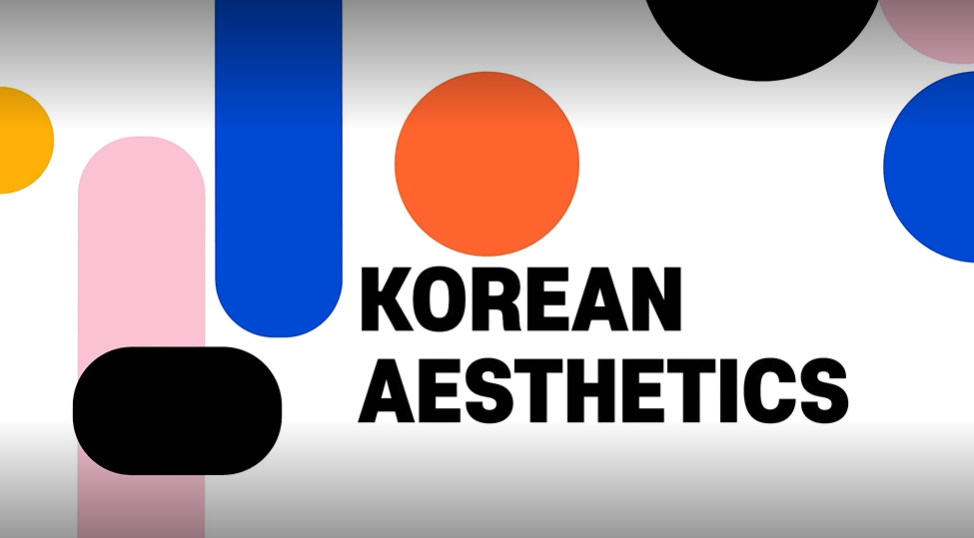
Korean Aesthetics
SKKUk
강좌 소개
홍보/예시 영상
강좌 운영 계획
|
W |
Theme |
T |
Topic |
|
1 |
Intro to Aesthetics and Korena Aesthetics |
1-1 |
Intro to Aesthetics and Korean Aesthetics |
|
1-2 |
1. Problems and Divisions of Aesthetics 1.1 Problems and Challenging Questions |
||
|
1-3 |
1.2 Divisions of Aesthetics |
||
|
1-4 |
2. Philosophy of the Aesthetic 2.1 Modern Discourses on Taste |
||
|
1-5 |
2.2 Aesthetic Attitude |
||
|
1-6 |
3. Philosophy of Art |
||
|
1-7 |
3.1 Problems of Contemporary Philosophy of Art |
||
|
1-8 |
3.2 Definition of Art |
||
|
1-9 |
3.3 Ontology of Artwork |
||
|
1-10 |
3.4 Representation |
||
|
1-11 |
3.5 Expression |
||
|
1-12 |
Part II: Introduction to Korean Aesthetics |
||
|
1-13 |
Background discourse of Korean aesthetics |
||
|
1-14 |
Korean music |
||
|
1-15 |
Korean visual arts |
||
|
1-16 |
Korean dance |
||
|
2 |
Comparative Approaches to Korean Aesthetics |
2-1 |
Introduction |
|
2-2 |
Methods of Comparative Aesthetics |
||
|
2-3 |
Rewards of Comparative aestheitcs |
||
|
3 |
Natural Beauty peculiar to Korea: from Nature and Beauty of Neo-Kantianism |
3-1 |
Introduction to natural beauty in Korean Aesthetics |
|
3-2 |
Main 1: Natural beauty and Nature in Korean tradition |
||
|
3-3 |
Specific opinions on what and how artworks have to do for conveying nature and its beauty in the case of the Joseon Dynasty |
||
|
3-4 |
Natural Beauty in the 20th century |
||
|
3-5 |
Dansaekhwa |
||
|
3-6 |
Further Questions & Discussions |
||
|
4 |
Korean painting |
4-1 |
Intro |
|
4-2 |
Eight Views of Xiaoxiang |
||
|
4-3 |
sub video 1. Landscape painting |
||
|
4-4 |
The Nine-bend Stream of Mt. Wuyi |
||
|
4-5 |
sub video 2. Mt. Wuyi and the valley |
||
|
4-6 |
True View Scenery Painting |
||
|
4-7 |
sub video 3. changes of meaning in landscape paintings |
||
|
5 |
Korean Narrative Tradition |
5-1 |
Opening |
|
5-2 |
The concept of Korean literature |
||
|
5-3 |
Sub Video1
[The concept of fiction] |
||
|
5-4 |
The concept of fable |
||
|
5-5 |
The re-emergence of fable as a new novel or sinsoseol in modern Korean literary history |
||
|
5-6 |
The gap between Chinese fable tradition and Koran fable tradition and Buddhist influences on the development of the Korean fable tradition |
||
|
5-7 |
A Court Case of Frog and Snake or Wasa ogan 蛙蛇獄案 |
||
|
5-8 |
closing |
||
|
6 |
Korean Art and Social Change |
6-1 |
Introduction |
|
6-2 |
Art and Moral Improvement |
||
|
6-3 |
Art in Joseon Dynasty |
||
|
6-4 |
Changes in Art in Joseon Dynasty |
||
|
6-5 |
Korean Art Today |
||
|
6-6 |
Q/A |
||
|
6-7 |
sub video Art of North Korea |
||
|
7 |
Korean Art and Morality |
7-1 |
Opening and Lecture outline |
|
7-2 |
Philosophical Background of Korean Artistic Practices: Confucian Moral Self-cultivation |
||
|
7-3 |
Double Desires for Self-Enjoyment |
||
|
7-4 |
The motive of self-forgetting in artistic practices |
||
|
8 |
The Aesthetics of Fun: 'Sinmyŏng' (神明) in Korean Popular Culture |
8-1 |
The Aesthetics of Play (nori) in Korean Popular Culture |
|
8-2 |
Releasing Han through Nori |
||
|
8-3 |
Eliciting Hŭng through Nori I: Humor |
||
|
8-4 |
T’alch’um |
||
|
8-5 |
Q&A and Discussion |
||
|
8-6 |
Hybridity and Creativity |
||
|
8-7 |
Reappropriation on traditional Minjung aesthetics |
||
|
8-8 |
What Makes Korean Popular Culture Korean? K-pop as a Case |
||
|
8-9 |
Concluding |
||
|
9 |
Group discussions by theme |
|
Art as tool |
|
10 |
QnA interview |
|
Role of Imperfection in Korean Aesthetics에 대한 교수님들의 생각에 대한 interview |
강좌운영팀 소개
교수자

- Hannah kim 교수
- -[Department] (Currently) Professor of Macalester College
- Assistant
- -[Final education] Ph.D.,Stanford University
- -[Main research] “Introduction to the Symposium on Korean
- Aesthetics: The Beginning is Half,” (2021) etc.
강좌지원팀

- 홍채연
- 성균관대학교 유학동양한국철학과
- E-mail: jtleon23@naver.com
강좌 수강 정보
이수/평가정보
| 과제명 | 과제 | 기말고사 | ||
|---|---|---|---|---|
| 반영비율 | 50% | 50% |
※ 총 60% 이상 점수 획득 시, 이수증을 발급받을 수 있습니다.
강좌 수준 및 선수요건
이 강좌는 유익한 내용이 다수 포함되어 있습니다.
교재 및 참고문헌
이 강좌는 여러가지 참고자료가 많이 있습니다.
자주 묻는 질문
강좌 교재는 따로 없습니다.







